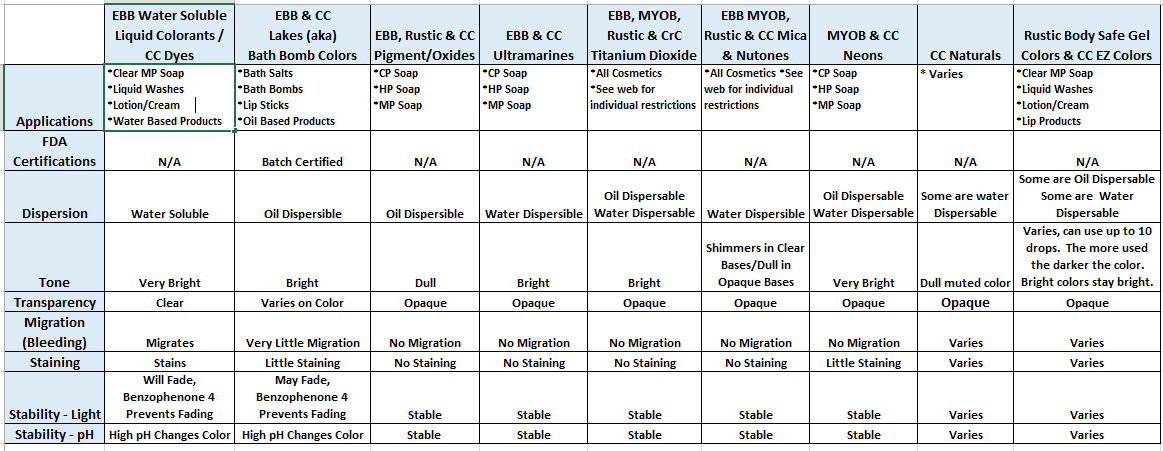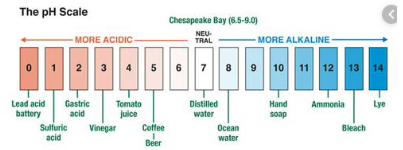Coloring CP SoapUpdated a year ago
It is highly recommended that you only use FDA approved cosmetic color additives in soap and cosmetics. Soap has an exemption from the FDA color additive rule, but that does not mean you can use anything to color your soap. Soap, meeting this definition and exemption, falls under the Consumer Product Safety Commission rules. In the event of a problem, the CPSC will likely say that the FDA has established safety guidelines for color additives in skincare products. It has been implied, and frankly it makes sense, that the CPSC allows GRAS (Generally Recognized As Safe) products to produce color. An example of GRAS color would be cocoa powder. Fabric dye does not fall into that category. Blue tends to be by far the most pH sensitive of the colorants, and botanical's which produce shades of blue (such as alkanet root) tend to be quite pH sensitive as well. Other botanical's are more predictable -you might want to experiment with annatto seed, turmeric and calendula petals to produce shades of yellow and orange, liquid chlorophyll to produce shades of green, unsweetened cocoa for brown, madder root for pink/red, paprika for peach, and saffron for a beautiful bright yellow. We need to check individual color for CP stable (does it change or morph) and migration(does it bleed into another area).

Usage Rates
If your colors aren’t as bright as you like, your recipe may just need a bit more color! There is no definitive usage rate for colors in soap. How much you add depends on a number of factors, including the type of colorant and the recipe used.
In cold process soap, we recommend mixing at a rate of 1 teaspoon of color to 1 tablespoon of a lightweight oil, like sweet almond oil. Larger batches may need to mix 2 teaspoons of the colorant into 2 tablespoons of oil, or 3 teaspoons into 3 tablespoons.
Mix colorant with a little warm oil. Mix ½ -¾ tsp in 2-3 Tbsp of oil. Add after oil and lye water are completely incorporated. Soap bubbles should be white in colored soap. If not, too much color has been added.
Dyes/Water Soluble Liquid Colorants
Dyes (Stained Glass) are water-based colors. They are not suitable for CP soap. They are bright and vibrant in MP soap. They will always migrate in MP soap. They are the only color that allows a clear bar of soap to stay clear.
Bath Bomb Lakes
- Lakes are dyes that have been processed with aluminum, barium or calcium. They are bright colors that, when used in moderation, will not migrate in mp soap base.
- All can be used except Blue.
- Bath Bomb Orange
Pigments/Oxides
- Pigments or Iron Oxides are generally considered to be all natural and will not migrate in soap. They tend to be very dull and earth like. The red tends to be more of a brick red and the yellow more of a mustard yellow.
- They don’t morph. What you see is what you get.
- Matte Brown Oxide Pigment Powder
Ultramarine
- Most often produce quite predictable final colors.
- Matte Lavender Ultramarine Powder
Titanium Dioxides
- Use Titanium Dioxide for Oil
Naturals
- Natural botanical's (such as alkanet root, beet juice, etc.) produce unpredictable shades which can even vary from batch to batch of the same soap making recipe.
- Activated charcoal is CP stable
Neon's
- In general, these can be used.
- Neon Coral and Cocktails Powder
EZ Colors/ Body Safe Gel Colors
- Many of the EZ Colors can be used in CP Soap. Best to check WSP Website for specifics of which can be used. Not all colors can be used in CP Soap. To find this info look for the chart listed below.
- Body Safe colors are best used in water based products and work great in MP soap.

Morphing
High pH during soap making can cause color changes or morphing.

Videos & Color Techniques